Fitch Ratings has revised the Outlook on Estonia's Long-term foreign currency rating to Positive from Stable
Published:
25 October 2003 y., Saturday
Fitch Ratings has revised the Outlook on Estonia's Long-term foreign currency rating to Positive from Stable, the agency said in a press release.
At the same time, Fitch affirmed the Long-term foreign and local currency ratings of Estonia at A- and A+, respectively. The Short-term foreign currency rating was also affirmed at F1. The Outlook on the local currency rating remains Stable.
Estonia's ratings are supported by continuing structural reforms as the country prepares to become a full member of the European Union in May 2004. It is standardizing business practices and legislation at Western European levels, and encouraging foreign investment, the latter of which has contributed to a continuing improvement in the profitability of the corporate and banking sectors. This reform drive has been underpinned by favorable tax rates - particularly on reinvested earnings - and Fitch expects the economy to record strong growth in the region of 5%-7% a year, continuing to raise real per capita incomes, which on a purchasing power basis are already double the level of a decade ago.
Estonia's public finances constitute a considerable support to the ratings. The 2002 budget outcome was much stronger than expected as enhanced tax collection and strong economic activity boosted revenues and the general government sector ran a surplus for the second consecutive year. The country's history of fiscal prudence encourages optimism that the budget will remain broadly in balance, and that the government's tax cutting plans will be countered by strong underlying revenue growth and a cautionary expenditure policy. At 5.3% of GDP, general government debt is already the lowest of any sovereign currently rated in the 'A' range by Fitch and is forecast to fall further. The low borrowing requirement should also continue to support the public sector's strong net external creditor status, which stood at 19% of current external receipts (CXR) by the end of 2002.
Estonia's economic success is reflected by a high level of gross domestic investment, which reached 32% of GDP in 2002. This high investment rate and strong consumer demand have fuelled import growth, causing the current account deficit to more than double last year, while net FDI inflows and reinvested earnings failed to finance the gap for the first time since 1999. Gross external debt increased by nine percentage points of external receipts last year to reach 67% of CXR by end-2002. External bank borrowing undertaken in an effort to compensate for a failure of deposit growth to match that of loans also contributed to an increase in Estonia's net external debt position. Trends over the first half of 2003 indicate that the current account deficit will widen further this year, before starting to narrow from 2004 onwards on the basis of an expected pick-up in external demand. While the government may need to be ready to tighten fiscal policy in the absence of a narrowing of the current account deficit from next year given the limited monetary policy tools at the disposal of the Bank of Estonia, Fitch largely sees recent trends in the current account as a reflection of the present stage of Estonia's successful economic development. External debt ratios remain in line with sovereigns rated in the 'A' range.
Šaltinis:
Interfax
Copying, publishing, announcing any information from the News.lt portal without written permission of News.lt editorial office is prohibited.
The most popular articles
 In European sustainable energy week 2010, new EU energy commissioner presents strategy to reduce Europe’s dependence on fossil fuel.
more »
In European sustainable energy week 2010, new EU energy commissioner presents strategy to reduce Europe’s dependence on fossil fuel.
more »
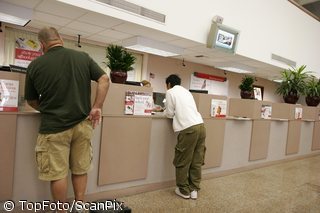 The EBRD is launching a Project Complaint Mechanism, which is expected to enhance the accountability and transparency of the Bank’s operations.
more »
The EBRD is launching a Project Complaint Mechanism, which is expected to enhance the accountability and transparency of the Bank’s operations.
more »
 The EBRD is boosting the availability of local currency financing in Armenia with a synthetic loan in Armenian Drams (AMD) worth $4 million to FINCA UCO CJSC for on-lending to local micro and small enterprises (MSEs).
more »
The EBRD is boosting the availability of local currency financing in Armenia with a synthetic loan in Armenian Drams (AMD) worth $4 million to FINCA UCO CJSC for on-lending to local micro and small enterprises (MSEs).
more »
 This year is the UN year of biodiversity and it brings endangered species into the spotlight.
more »
This year is the UN year of biodiversity and it brings endangered species into the spotlight.
more »
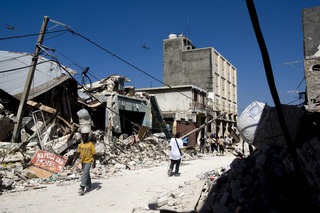 The World Bank Board of Directors today approved a US$65 million project to support the recovery of Haiti’s critical infrastructure as well as the reestablishment of basic State functions following the devastating 7.0 magnitude earthquake on January 12, 2010.
more »
The World Bank Board of Directors today approved a US$65 million project to support the recovery of Haiti’s critical infrastructure as well as the reestablishment of basic State functions following the devastating 7.0 magnitude earthquake on January 12, 2010.
more »
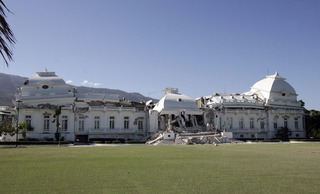 Haiti’s arduous reconstruction and recovery process jolted forward today following fresh commitments to help the Caribbean nation rebuild in the wake of its devastating January 12 earthquake.
more »
Haiti’s arduous reconstruction and recovery process jolted forward today following fresh commitments to help the Caribbean nation rebuild in the wake of its devastating January 12 earthquake.
more »
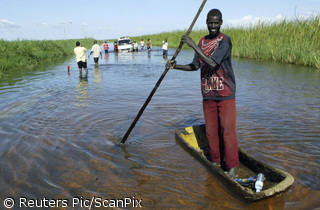 A mission from the African Department of the International Monetary Fund (IMF) visited Uganda during March 4-17, 2010, to conduct the seventh and final review under Uganda’s Policy Support Instrument (PSI) and reach understandings on a policy framework for a new three-year PSI to cover the period 2010 to 2013.
more »
A mission from the African Department of the International Monetary Fund (IMF) visited Uganda during March 4-17, 2010, to conduct the seventh and final review under Uganda’s Policy Support Instrument (PSI) and reach understandings on a policy framework for a new three-year PSI to cover the period 2010 to 2013.
more »
 The European Economic and Social Committee (EESC), as the first EU institution, rose to the challenge of providing a comprehensive vision for the future of the Common Agriculture Policy (CAP), in advance of the European Commission's papers on the matter, due to be issued later this year and in 2011.
more »
The European Economic and Social Committee (EESC), as the first EU institution, rose to the challenge of providing a comprehensive vision for the future of the Common Agriculture Policy (CAP), in advance of the European Commission's papers on the matter, due to be issued later this year and in 2011.
more »
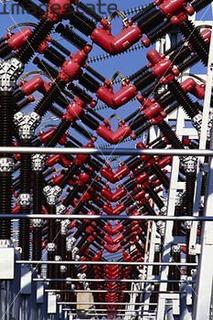 The outlook for primary energy supplies, heat, and electricity is questionable for the Eastern Europe and Central Asia region, despite Russia and Central Asia’s current role as a major energy supplier to both Eastern and Western Europe.
more »
The outlook for primary energy supplies, heat, and electricity is questionable for the Eastern Europe and Central Asia region, despite Russia and Central Asia’s current role as a major energy supplier to both Eastern and Western Europe.
more »
 The Executive Board of the International Monetary Fund (IMF) today approved a 36-month, SDR 513.9 million (about US$790 million) Stand-By Arrangement (SBA) for El Salvador to help the country mitigate the adverse effects of the global crisis.
more »
The Executive Board of the International Monetary Fund (IMF) today approved a 36-month, SDR 513.9 million (about US$790 million) Stand-By Arrangement (SBA) for El Salvador to help the country mitigate the adverse effects of the global crisis.
more »